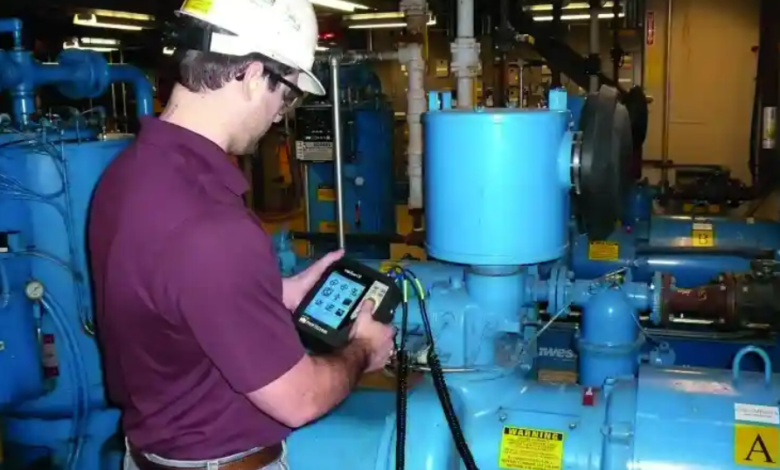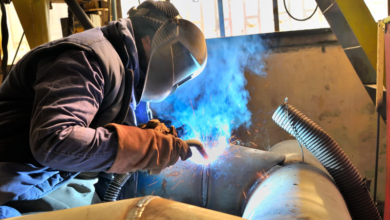Stop Failures Before They Start: The Power of Dynamic Balancing

The backbone of every industrial operation, from manufacturing plants to power generation houses, is rotating machinery. These are robust in design, but even minute imbalances in the rotating parts start a vibration that results in accelerated wear and leads to unexpected downtime. Dynamic balancing is one of the preventive methods aimed at these issues by correcting mass distribution in moving parts. Companies can ensure that such practices will protect machine performance and extend machinery life while reducing costly failures before they happen.
Minimized Vibration and Noise
One of the immediate benefits of machine balancing is the reduction of vibration and functional noise. Imbalanced rotors, fans, or shafts induce oscillations that stress bearings, couplings, and housings. Over time, these types of vibrations compromise the mechanical integrity and induce redundant noise that can affect both equipment and plant comfort. Dynamic positioning includes a redivision of mass along the axis of gyration to neutralize centrifugal forces that induce uneven motion. Machinery will run more easily, extending equipment life and reducing noise to provide personnel with a safer and quieter work environment. This provides a more precise operating terrain, perfecting product quality in sensitive operations.
Extended Equipment Lifespan
Neglected imbalance accelerates wear on critical components, resulting in more frequent replacements and maintenance interventions. Dynamic positioning dramatically reduces the stress on bearings, seals, and motor assemblies. This will preventively slow degradation, allowing machinery to operate at peak efficiency longer. Companies will benefit from fewer unexpected shutdowns, reduced consumption of spare parts, and lower overall costs of maintenance. These factors taken together have the cumulative effect of noticeably increasing asset life and, in turn, contributing to an improved return on investment for equipment-intensive operations. Long lives also give an organization more flexibility when considering capital expenditures.
Enabling Precision Maintenance
Machine balancing also contributes to the precision maintenance strategies by offering detailed diagnostic information on machine condition. The balancing process identifies small anomalies in mass distribution that point out weaknesses well before they turn into failures; this helps a maintenance team to plan focused intervention, prepare part replacements, and schedule relubrication routines accordingly. This approach minimizes unnecessary repairs and downtime, ensuring that maintenance resources are applied where they have the greatest impact. Organizations that invest in the best balancing services that provide accurate measurements and corrective solutions gain a competitive advantage in reliability-focused industries. This targeted approach will reduce the overall maintenance complexity and simplify the operations of an organization over time.
See also: Protection Dog Training Techniques: How Experts Prepare Your Dog to Protect You
Improved Operational Efficiency
Machines running under a state of perfect balance consume less energy and show consistency. Imbalances require additional torque to maintain rotation, which increases energy consumption and generates heat that can further degrade components. Dynamic positioning removes these inefficiencies, assuring smoother operation and more predictable performance. Improvements such as these not only lower energy costs but also improve productivity by preventing stoppages due to erratic behavior or premature wear. In competitive industrial settings, improvements like this may mean the difference between measurable cost savings and higher output. Another guarantee of balanced machinery is faster production cycles, with better response times to periods of high demand.
Enhanced Safety and Compliance
Vibration-based failures can lead to serious safety pitfalls to the labor force, as well as regulatory non-compliances in case malfunctioning equipment leads to accidents. Machine balancing can minimize these hazards by conserving the integrity of rotating machinery. Balanced machinery runs predictably, minimizing the chances of disastrous failure that may hurt workers or other systems. Besides, most industries have tight norms regarding vibration and noise. Maintaining equipment within specified limits means compliance with occupational health and safety regulations, developing a culture of trustworthiness and responsibility. Safety in the plant boosts hand morale and lessens the operation’s concern for liability.Dynamic balancing is more than a maintenance procedure; it’s a strategic investment in machinery longevity, efficiency of operation, and workplace safety. This will minimize vibration, extend the life of your equipment, enable precision maintenance, ameliorate effectiveness, and enhance safety, allowing associations to prevent failures before they happen. By integrating this visionary approach into regular schedules, companies can ensure peak performance and reduce costs with protection for both the labor force and assets. In today’s high-demand industrial terrain, dynamic positioning is essential for any operation seeking sustainable reliability and measurable functional gain.





